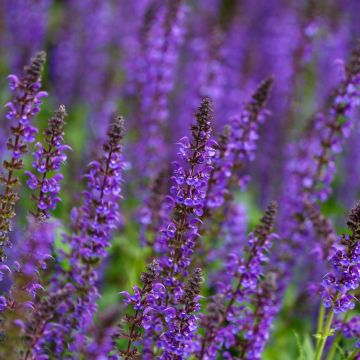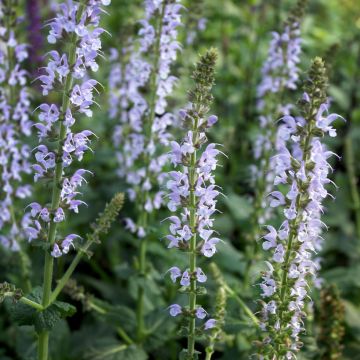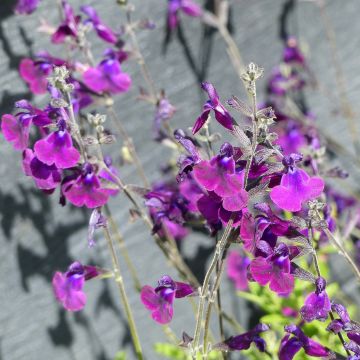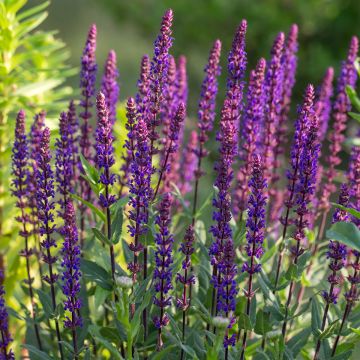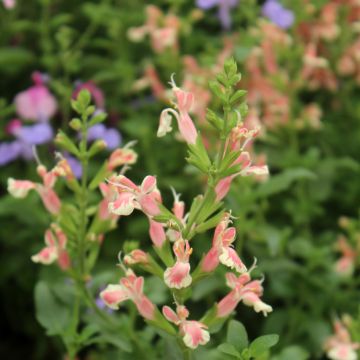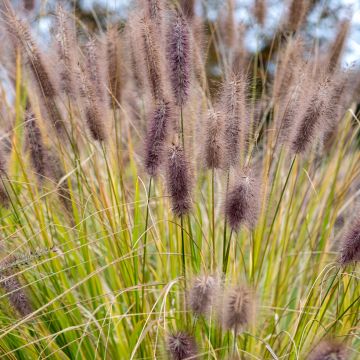

Salvia sylvestris Dear Anja
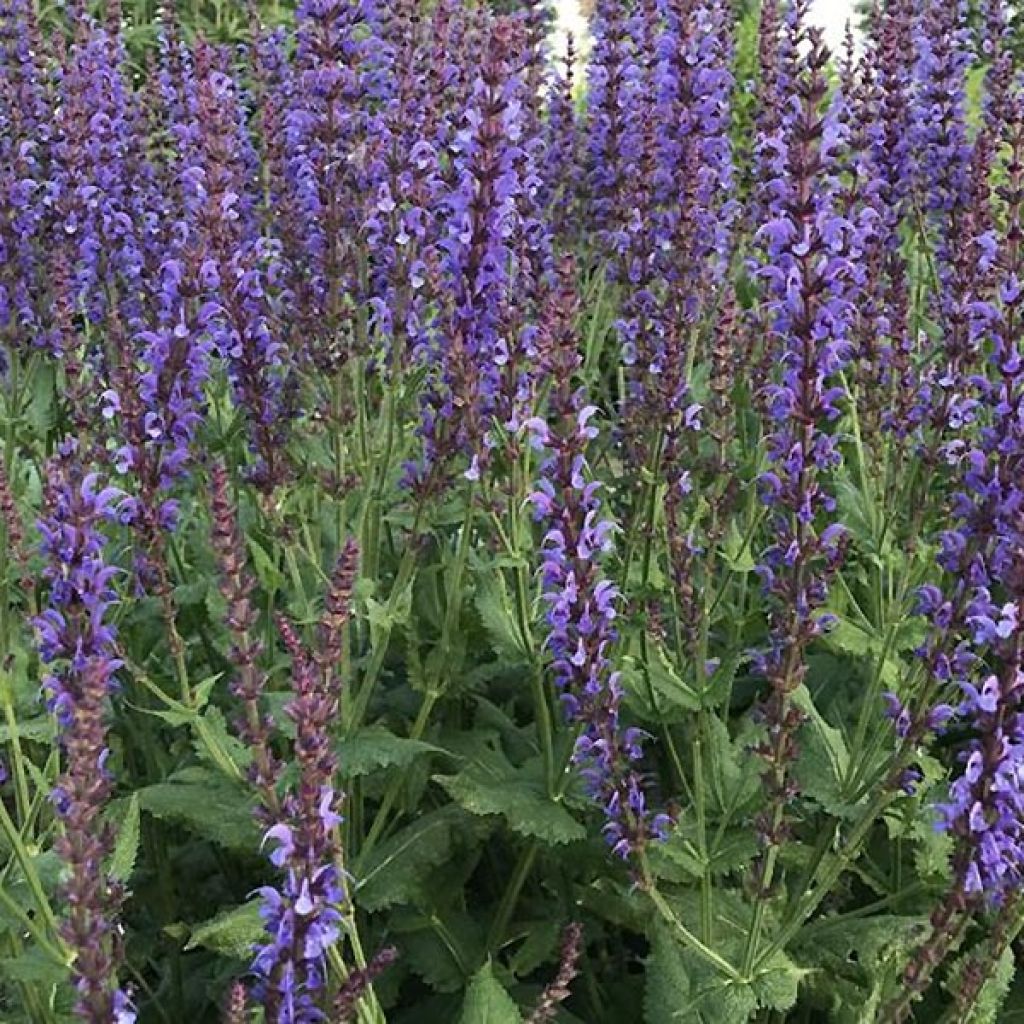

Salvia sylvestris Dear Anja
Salvia sylvestris Dear Anja
Salvia x sylvestris Dear Anja
Wood Sage, Forest Sage
Special offer!
Receive a €20 voucher for any order over €90 (excluding delivery costs, credit notes, and plastic-free options)!
1- Add your favorite plants to your cart.
2- Once you have reached €90, confirm your order (you can even choose the delivery date!).
3- As soon as your order is shipped, you will receive an email containing your voucher code, valid for 3 months (90 days).
Your voucher is unique and can only be used once, for any order with a minimum value of €20, excluding delivery costs.
Can be combined with other current offers, non-divisible and non-refundable.
Why not try an alternative variety in stock?
View all →This plant carries a 12 months recovery warranty
More information
We guarantee the quality of our plants for a full growing cycle, and will replace at our expense any plant that fails to recover under normal climatic and planting conditions.
Would this plant suit my garden?
Set up your Plantfit profile →
Description
Salvia x sylvestris ‘Dear Anja' is a very beautiful perennial hybrid sage, with the appearance of a charming weed. It is highly floriferous. From July to August, it produces stunning clusters of blue-violet flowers, in airy and tight spikes. It bears tall floral stems that can reach 80cm (32in) in height, emerging from a densely leafy and erect clump. This hardy and robust perennial is one of the easiest plants to succeed with. It is ideal in borders or as mass plantings, in full sun or partial shade, in not too dry to moist soil.
Salvia x sylvestris is a horticultural hybrid obtained by cross-breeding S. nemorosa and S. pratensis, two very hardy sages native to Eurasia. These plants belong to the Lamiaceae family and have in common the ability to withstand cold, sun, and drought-prone soils. The 'Dear Anja' variety stands out for its vigour and magnificent long spike flowering. Its branched and upright clump spreads over a diameter of 30cm (12in). The plant produces summer inflorescences in spikes reaching 80cm (32in) in height, with flowers measuring 0.5 to 1cm (0.4in) in length. The blue to violet flowers bear purple or violet bracts. The flowers bloom from July and continue blooming until the end of August. They are highly prized by butterflies and bees. The deciduous leaves, measuring 5 to 10cm (2 to 4in) in length, are oval to oblong, and are rough with crenate edges.
'Dear Anja' is vigorous enough to outcompete weeds. It excels on embankments, contributing to their stability with its deep anchoring roots, allowing it to draw moisture even during heatwaves. In this regard, it is perfect for maintaining soil in rockeries or banks near water bodies. It is a highly resistant plant, tolerating periods of drought once well established, even if the beauty of its foliage may suffer. It withstands spartan growing conditions. It tolerates limestone well, even growing on chalky hillsides, and endures harsh winters without faltering. In borders, plant it with clary sage and common sage, along with old roses, Nepeta x faassenii, and Lychnis coronaria.
With over 900 species of annuals, perennials, and softwood shrubs distributed throughout the world, except in very cold regions and tropical forests, the Salvia genus is the most diverse in the Lamiaceae family.
Flowering
Foliage
Plant habit
Botanical data
Salvia
x sylvestris
Dear Anja
Lamiaceae
Wood Sage, Forest Sage
Cultivar or hybrid
Other Salvia - Sage
View all →Planting and care
Plant in ordinary, even poor and rather calcareous soil, that is moist but well-draining. Plant it in well-worked soil. Mix in some horticultural compost to improve poor soil. This plant tolerates some drought once well established. It does not appreciate heavy and waterlogged soils in winter, which can harm its hardiness. Plant it in a sunny or semi-shaded position. It is an easy-to-grow plant. Give it fertiliser in spring. Cut back all the branches by half in April. After flowering, cut back the faded flower stems to stimulate and prolong flowering. Divide the plant after 3 years to preserve its vitality.
Planting period
Intended location
Care
Planting & care advice
This item has not been reviewed yet - be the first to leave a review about it.
Similar products
Haven't found what you were looking for?
Hardiness is the lowest winter temperature a plant can endure without suffering serious damage or even dying. However, hardiness is affected by location (a sheltered area, such as a patio), protection (winter cover) and soil type (hardiness is improved by well-drained soil).

Photo Sharing Terms & Conditions
In order to encourage gardeners to interact and share their experiences, Promesse de fleurs offers various media enabling content to be uploaded onto its Site - in particular via the ‘Photo sharing’ module.
The User agrees to refrain from:
- Posting any content that is illegal, prejudicial, insulting, racist, inciteful to hatred, revisionist, contrary to public decency, that infringes on privacy or on the privacy rights of third parties, in particular the publicity rights of persons and goods, intellectual property rights, or the right to privacy.
- Submitting content on behalf of a third party;
- Impersonate the identity of a third party and/or publish any personal information about a third party;
In general, the User undertakes to refrain from any unethical behaviour.
All Content (in particular text, comments, files, images, photos, videos, creative works, etc.), which may be subject to property or intellectual property rights, image or other private rights, shall remain the property of the User, subject to the limited rights granted by the terms of the licence granted by Promesse de fleurs as stated below. Users are at liberty to publish or not to publish such Content on the Site, notably via the ‘Photo Sharing’ facility, and accept that this Content shall be made public and freely accessible, notably on the Internet.
Users further acknowledge, undertake to have ,and guarantee that they hold all necessary rights and permissions to publish such material on the Site, in particular with regard to the legislation in force pertaining to any privacy, property, intellectual property, image, or contractual rights, or rights of any other nature. By publishing such Content on the Site, Users acknowledge accepting full liability as publishers of the Content within the meaning of the law, and grant Promesse de fleurs, free of charge, an inclusive, worldwide licence for the said Content for the entire duration of its publication, including all reproduction, representation, up/downloading, displaying, performing, transmission, and storage rights.
Users also grant permission for their name to be linked to the Content and accept that this link may not always be made available.
By engaging in posting material, Users consent to their Content becoming automatically accessible on the Internet, in particular on other sites and/or blogs and/or web pages of the Promesse de fleurs site, including in particular social pages and the Promesse de fleurs catalogue.
Users may secure the removal of entrusted content free of charge by issuing a simple request via our contact form.
The flowering period indicated on our website applies to countries and regions located in USDA zone 8 (France, the United Kingdom, Ireland, the Netherlands, etc.)
It will vary according to where you live:
- In zones 9 to 10 (Italy, Spain, Greece, etc.), flowering will occur about 2 to 4 weeks earlier.
- In zones 6 to 7 (Germany, Poland, Slovenia, and lower mountainous regions), flowering will be delayed by 2 to 3 weeks.
- In zone 5 (Central Europe, Scandinavia), blooming will be delayed by 3 to 5 weeks.
In temperate climates, pruning of spring-flowering shrubs (forsythia, spireas, etc.) should be done just after flowering.
Pruning of summer-flowering shrubs (Indian Lilac, Perovskia, etc.) can be done in winter or spring.
In cold regions as well as with frost-sensitive plants, avoid pruning too early when severe frosts may still occur.
The planting period indicated on our website applies to countries and regions located in USDA zone 8 (France, United Kingdom, Ireland, Netherlands).
It will vary according to where you live:
- In Mediterranean zones (Marseille, Madrid, Milan, etc.), autumn and winter are the best planting periods.
- In continental zones (Strasbourg, Munich, Vienna, etc.), delay planting by 2 to 3 weeks in spring and bring it forward by 2 to 4 weeks in autumn.
- In mountainous regions (the Alps, Pyrenees, Carpathians, etc.), it is best to plant in late spring (May-June) or late summer (August-September).
The harvesting period indicated on our website applies to countries and regions in USDA zone 8 (France, England, Ireland, the Netherlands).
In colder areas (Scandinavia, Poland, Austria...) fruit and vegetable harvests are likely to be delayed by 3-4 weeks.
In warmer areas (Italy, Spain, Greece, etc.), harvesting will probably take place earlier, depending on weather conditions.
The sowing periods indicated on our website apply to countries and regions within USDA Zone 8 (France, UK, Ireland, Netherlands).
In colder areas (Scandinavia, Poland, Austria...), delay any outdoor sowing by 3-4 weeks, or sow under glass.
In warmer climes (Italy, Spain, Greece, etc.), bring outdoor sowing forward by a few weeks.






























